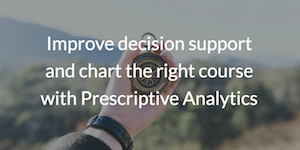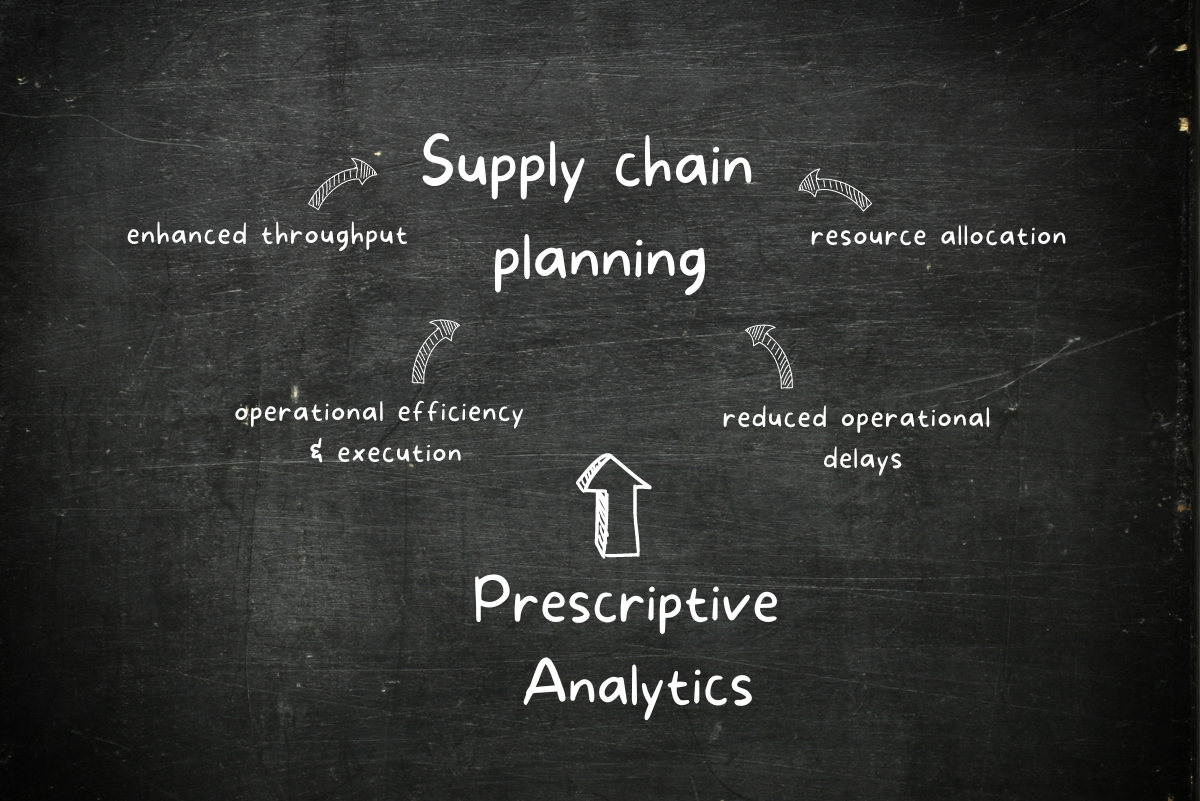3 Compelling Reasons to Start Using Prescriptive Analytics
If you’ve read up on the latest topics in the field of data analysis, then you’ve probably encountered the term Prescriptive Analytics. Prescriptive Analytics is a type of Advanced Analytics that results in a recommended action. Unlike Descriptive (focused on reporting with basic trend or pattern recognition) or Predictive Analytics (focused on predicting the future with forecasting techniques), Prescriptive Analytics uses techniques like machine learning and mathematical modeling to help you improve decision making. Supply chain teams are curious about adopting Prescriptive Analytics and exploring the benefits.
According to Gartner’s Forecast Snapshot, the Prescriptive Analytics software market will reach $1.1 billion in value by 2019. About 35% of companies are expected to adopt this type of analytics by 2020, but what exactly is driving adoption? AIMMS has been in the business for more than 25 years. Over time, we’ve identified 3 major reasons businesses feel compelled to adopt Prescriptive Analytics. Let’s explore them further.
1. A need to look beyond spreadsheets
 Most companies start their analytics journey using spreadsheets, so it’s only natural that we see many of them shifting towards Prescriptive Analytics when their organization “outgrows” them. Typically, organizations use Excel to start getting insights about what to do when, using data from transactional systems. Spreadsheets are great for personal productivity and they tend to work well for the individual that builds them, but what happens when you work in a team of 70 people? As more and more people get involved, more versions of these spreadsheets get shared. All of a sudden, your planning board turns into a deeply tangled mess. Sharing knowledge is difficult and the original logic behind each spreadsheet is often hard for others to comprehend. Validating and finding errors is taxing. Centralizing and structuring data when you work with spreadsheets is a headache too. Perhaps most importantly, changing your strategy is nearly impossible. Eventually, the company gets so caught up in the process that it takes too long to react to problems or find opportunities for business improvement.
Most companies start their analytics journey using spreadsheets, so it’s only natural that we see many of them shifting towards Prescriptive Analytics when their organization “outgrows” them. Typically, organizations use Excel to start getting insights about what to do when, using data from transactional systems. Spreadsheets are great for personal productivity and they tend to work well for the individual that builds them, but what happens when you work in a team of 70 people? As more and more people get involved, more versions of these spreadsheets get shared. All of a sudden, your planning board turns into a deeply tangled mess. Sharing knowledge is difficult and the original logic behind each spreadsheet is often hard for others to comprehend. Validating and finding errors is taxing. Centralizing and structuring data when you work with spreadsheets is a headache too. Perhaps most importantly, changing your strategy is nearly impossible. Eventually, the company gets so caught up in the process that it takes too long to react to problems or find opportunities for business improvement.
Let’s take an example from one of our clients in manufacturing. The company was using spreadsheets to source its materials. Every month, it took them about a week to understand what to do for the next 4-6 months. But they operate in a highly volatile market. They needed to be agile and understand when to change pricing or suppliers more quickly. Building agility into their planning process was not possible with spreadsheets. They decided to switch from spreadsheets to AIMMS. Our modeling platform allowed them to analyze and see feasibilities at greater speed. Synergy between all planners was also easier to attain.
Nampak, BP and JBS are among the many other companies that have switched from spreadsheets to the AIMMS Prescriptive Analytics platform. Nampak was able to build a production planning system in less than 6 months. Before implementing AIMMS, they were not able to create plans on the spot. As a result, they would sometimes reject new clients simply because they did not know what they were Capable to Promise. They went from spreadsheets to rapid planning and innovation in a matter of weeks.
2. Feeling boxed in with Off the Shelf software
 Another thing that tends to happen when an organization finds spreadsheets to be limiting, is that they switch to ready-made solutions. Off the shelf scheduling tools, pricing optimization tools, and production planning tools tend to work well for many businesses. You just have to make sure your data is in there and you can immediately start playing around. But if you want to be more competitive or be more “in control,” these tools may not be enough.
Another thing that tends to happen when an organization finds spreadsheets to be limiting, is that they switch to ready-made solutions. Off the shelf scheduling tools, pricing optimization tools, and production planning tools tend to work well for many businesses. You just have to make sure your data is in there and you can immediately start playing around. But if you want to be more competitive or be more “in control,” these tools may not be enough.
Take production planning tools, for example. Companies often struggle to integrate these systems with contract management systems or with pricing solutions. The same thing happens with off the shelf S&OP tools. Typically, companies start augmenting these solutions with a fit for purpose application. If they don’t, they have to wait until the supplier releases the required functionality.
A lot of our customers use our Prescriptive Analytics technology to build custom functionalities on top of their existing tools. PTT, the largest oil and gas company in Thailand, is a good example.The company was using a solution for global supply chain planning but they found this solution too restrictive. They had very specific regulations to adhere to and a unique process. So they needed more control and more specific capabilities. Prescriptive Analytics became a core differentiator for them, helping them save $24 million in costs.
The bottom line is, if you have a business that fits into a solution, go with the existing solution. If you feel boxed in by your off the shelf software, it’s time to invest time, money and effort into Prescriptive Analytics models. The benefit will outweigh the effort.
 3. A desire to drive innovation
3. A desire to drive innovation
Another reason companies decide to start using Prescriptive Analytics is a desire to innovate. Companies that come to us with this in mind understand that they can’t stand still. They don’t want to limit themselves to a specific problem, they want to go further. Their supply chain leaders realize that new technologies can help them discover scenarios they hadn’t thought about before.
A global carrier, for example, used our technology to optimize their network. Along the way, they discovered that sharing their network with competitors would make them more profitable. That’s the beauty of Prescriptive Analytics: it changes your mindset and opens up new ways of doing business – it’s exactly what you need in a changing digital landscape.
Liberty Global is another great company that’s using AIMMS to drive innovation. They leveraged our Prescriptive Analytics platform to optimize their network development supply chain by translating network expansion projects to Supply Chain material impact, achieving a 70% increase in planning accuracy. Today, they are interested in using AIMMS in many other areas of their business.
As consumers, we have come to expect innovation. It’s time for businesses to think the same way. You can innovate on strategy, process, or even existing systems. They key is to be open to disruption.
If you’re interested in learning more about adopting Prescriptive Analytics, check out our 20-min explainer webinar or join our upcoming webcast for an in-depth look at what you can build with this technology.
Additional resources
- Browse case studies to find out how others are using Prescriptive Analytics.
- Check out prescriptive analytics use cases across sectors and disciplines
- Read Gartner’s Hype Cycle for Chief Supply Chain Officers to uncover the benefits of this technology and its evolution in the market.





